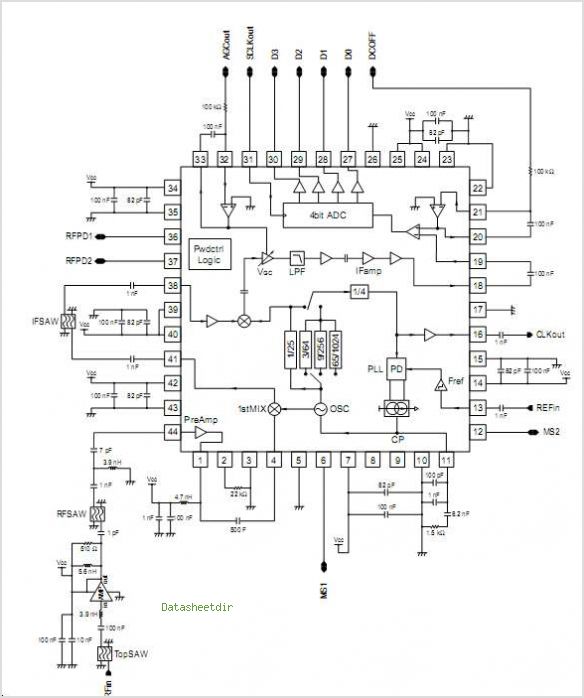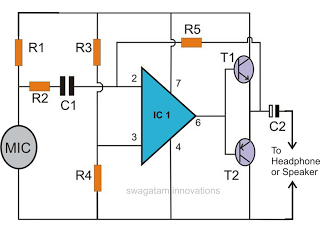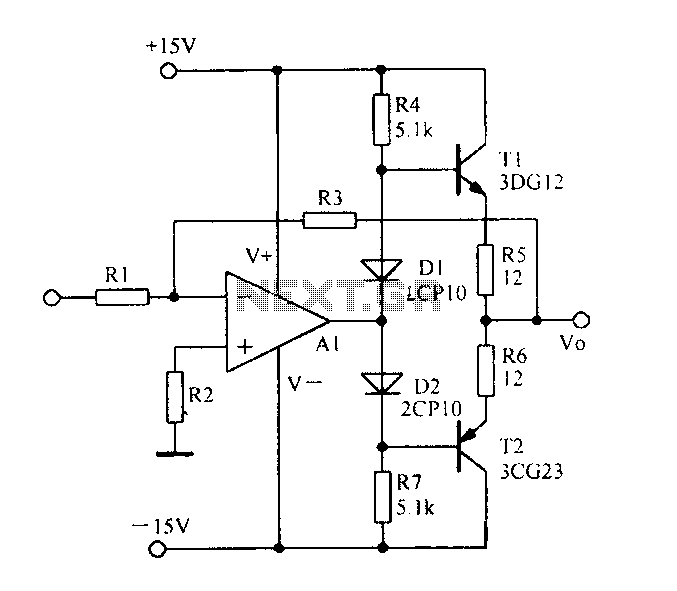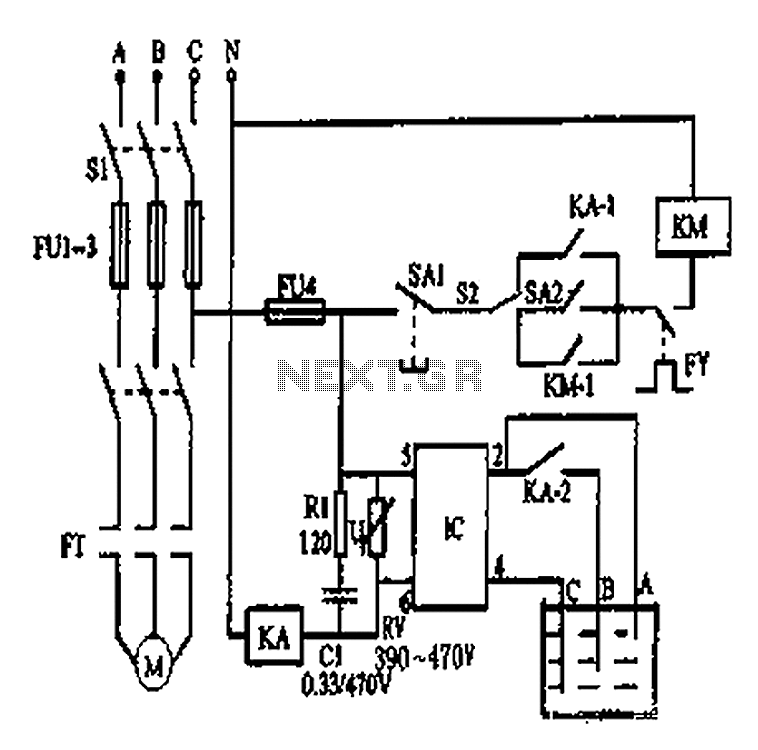
Voice Identifier Circuit

The circuit utilizes an ISD1016 audio record/playback chip from Information Storage Devices, Inc. to record and playback messages on demand. While it is primarily designed for use with transmitters, it can also serve as an electronic notepad or similar applications. For additional applications, refer to the ISD1016 data sheet.
The ISD1016 chip is a versatile device that allows for the recording and playback of audio messages. It features a built-in microphone input for capturing audio and a speaker output for playback. The chip operates by storing audio data in a non-volatile memory, enabling it to retain recorded messages even when powered off.
The circuit typically includes a power supply section to provide the necessary voltage to the ISD1016, which usually operates at 3V to 5V. The input section includes a microphone connected to the chip's recording input, allowing the user to capture audio. A simple push-button switch can be used to initiate recording and playback, providing a straightforward interface for the user.
Output from the chip can be connected to a small speaker or an audio amplifier, depending on the desired volume level. The circuit may also include passive components such as resistors and capacitors for signal conditioning and to ensure stability during operation.
For applications beyond simple audio recording, the ISD1016 can be integrated into various devices, such as greeting cards, toys, or alarm systems, where recorded messages can enhance functionality. The data sheet provides further insights into alternative configurations and additional features, such as the ability to chain multiple ISD1016 chips for longer recording times or to customize playback speed and quality.
Understanding the complete functionality of the ISD1016 and its integration into a circuit is essential for engineers looking to utilize this chip in innovative applications. Using an ISD1016 audio record/playback chip (Information Storage Devices, Inc.), this circuit records and plays back messages on command. Although intended for use with transmitters, it can be used as an electronic notepad, etc. Consult the ISD1016 data sheet for other applications.
The ISD1016 chip is a versatile device that allows for the recording and playback of audio messages. It features a built-in microphone input for capturing audio and a speaker output for playback. The chip operates by storing audio data in a non-volatile memory, enabling it to retain recorded messages even when powered off.
The circuit typically includes a power supply section to provide the necessary voltage to the ISD1016, which usually operates at 3V to 5V. The input section includes a microphone connected to the chip's recording input, allowing the user to capture audio. A simple push-button switch can be used to initiate recording and playback, providing a straightforward interface for the user.
Output from the chip can be connected to a small speaker or an audio amplifier, depending on the desired volume level. The circuit may also include passive components such as resistors and capacitors for signal conditioning and to ensure stability during operation.
For applications beyond simple audio recording, the ISD1016 can be integrated into various devices, such as greeting cards, toys, or alarm systems, where recorded messages can enhance functionality. The data sheet provides further insights into alternative configurations and additional features, such as the ability to chain multiple ISD1016 chips for longer recording times or to customize playback speed and quality.
Understanding the complete functionality of the ISD1016 and its integration into a circuit is essential for engineers looking to utilize this chip in innovative applications. Using an ISD1016 audio record/playback chip (Information Storage Devices, Inc.), this circuit records and plays back messages on command. Although intended for use with transmitters, it can be used as an electronic notepad, etc. Consult the ISD1016 data sheet for other applications.





